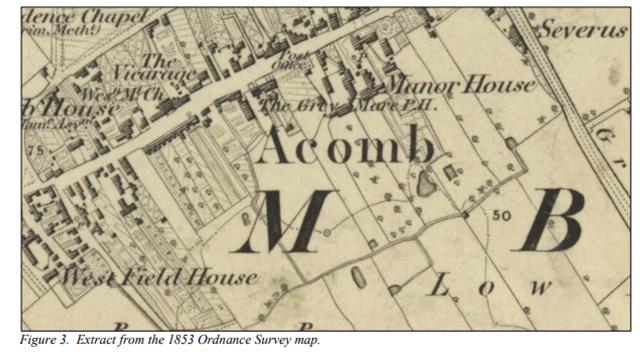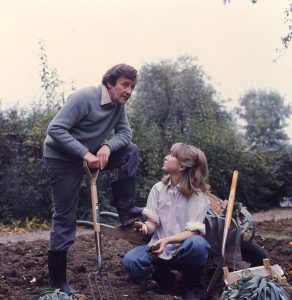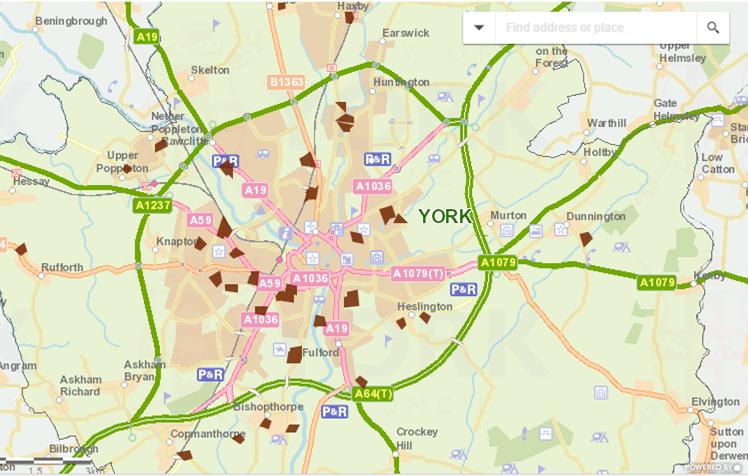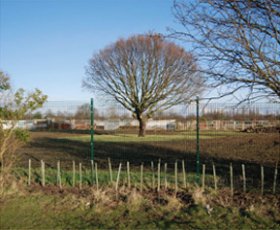An archaeology report, produced as part of the investigations into the bowling club development project on Front Street, has provided a further insight into the history of the village.
The report says that, “in February 2005 On-Site Archaeology carried out an archaeological evaluation on the disused allotments located immediately to the west of the current site. Within one of the evaluation trenches two small pits containing late 1st to mid 3rd century Roman pottery were recorded, cutting into the natural sand. A residual sherd of late 1st to early 2nd century pottery was recovered from a subsoil deposit in one of the other trenches”

The allotments land has now been bulldozed to form a building compound. No mitigation measures have been taken to preserve or record any archaeological remains on that site (which is owned by the York Council).
The report goes on to say, “There is no evidence of occupation during the Anglo-Saxon period although the name ‘Acomb’ is Anglo-Saxon in origin meaning “at the oaks”.
“The mediaeval period is when the village of Acomb took on a known form with the focus of the village being the area between The Green and Front Street. Acomb is listed in the Domesday survey of 1086 as a manor with 14 rent-payers. The Church of St. Stephen is an 1830 construction replacing an earlier 12th century church with possible pre-Conquest origins. Archaeological work has taken place behind 12-26 The Green, which produced evidence for mediaeval domestic activity and possible ploughsoil relating to medieval crofts or garden plots An evaluation carried out by OSA in March 2007 to the rear of 95 Front Street revealed late medieval boundary ditches containing pottery dated to the 15th and 16th centuries”.
The findings of the investigation can be read by clicking here .
A report on contamination on the site can be read by clicking here





 City of York Council in partnership with North Yorkshire Police visited all 17 council allotment sites at pre-arranged dates to enable allotment holders to have their property marked and registered. As well as acting as a deterrent to theft, property marking also makes it easier to return belongings to their rightful owner should they be stolen and to possibly use them as evidence in crimes.
City of York Council in partnership with North Yorkshire Police visited all 17 council allotment sites at pre-arranged dates to enable allotment holders to have their property marked and registered. As well as acting as a deterrent to theft, property marking also makes it easier to return belongings to their rightful owner should they be stolen and to possibly use them as evidence in crimes. An extensive programme of allotment security events launches at Bustardthorpe Allotments on Sunday 8 May.
An extensive programme of allotment security events launches at Bustardthorpe Allotments on Sunday 8 May.


